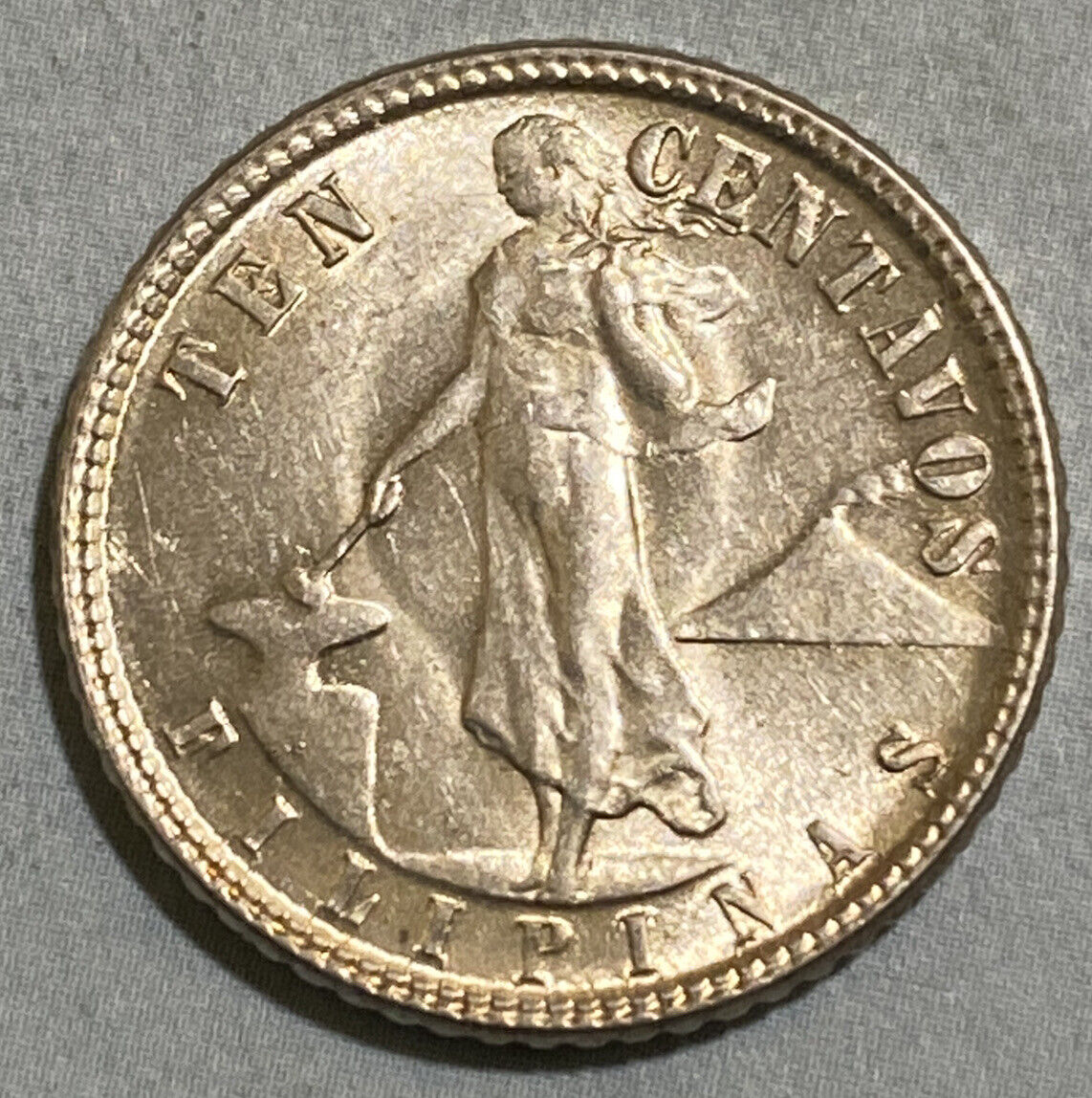-40%
1944-D, Philippines (US Administration). Silver 20 Centavos Coin. NGC MS66(+)
$ 98.28
- Description
- Size Guide
Description
CoinWorldTV1944-D, Philippines (US Administration). Silver 20 Centavos Coin. NGC MS66(+)
Mint Year: 1944
Reference: KM-182.
Mint Place: Denver (D)
Denomination: 20 Centavos
Condition:
Certified and graded by NGC as MS-66(+)
Material: Silver (.750)
Diameter: 21mm
Weight: 4gm
Authenticity unconditionally guaranteed.
Bid with confidence!
The
Philippines
,
is a sovereign island country in Southeast Asia situated in the western Pacific Ocean. It consists of about 7,641 islands.
The islands were ceded by Spain to the United States as a result of the latter's victory in the Spanish–American War. A compensation of 20 million US dollars was paid to Spain according to the terms of the 1898 Treaty of Paris. As it became increasingly clear the United States would not recognize the nascent First Philippine Republic, the Philippine–American War broke out, the First Republic was defeated, and the archipelago was administered under an Insular Government. The war resulted in the deaths of tens of thousands of combatants as well as a couple of hundred thousand civilians, mostly from a cholera epidemic.
he Americans then suppressed other rebellious sub-states: mainly, the waning Sultanate of Sulu, as well as the insurgent Tagalog Republic, the Cantonal Republic of Negros in the Visayas, and the Republic of Zamboanga in Mindanao. During this era, a renaissance in Philippine culture occurred, with the expansion of Philippine cinema and literature. In 1935, the Philippines was granted Commonwealth status with Manuel Quezon as president. He designated a national language and introduced women's suffrage and land reform. Plans for independence over the next decade were interrupted by World War II when the Japanese Empire invaded and the Second Philippine Republic of José P. Laurel was established as a collaborator state.
Many atrocities and war crimes were committed during the war such as the Bataan Death March and the Manila massacre that culminated during the Battle of Manila. In 1944, Quezon died in exile in the United States and Sergio Osmeña succeeded him. The Allied Forces then employed a strategy of island hopping towards the Philippine Archipelago, in the process, retaking territory conquered by Imperial Japan.
From mid-1942 through mid-1944, the Filipino guerrilla resistance had been supplied and encouraged by U.S. Navy submarines and a few parachute drops, so that the guerrillas could harass the Japanese Army and take control of the rural jungle and mountainous areas – amounting to about half of the Philippine archipelago. While remaining loyal to the United States, many Filipinos hoped and believed that liberation from the Japanese would bring them freedom and their already-promised independence.
Eventually, the largest naval battle in history, according to gross tonnage, the Battle of Leyte Gulf, occurred when the Allied Forces started the liberation of the Philippines from the Japanese Empire. Allied troops defeated the Japanese in 1945. By the end of the war it is estimated that over a million Filipinos had died.
Only 1$ shipping on each additional item purchased!











